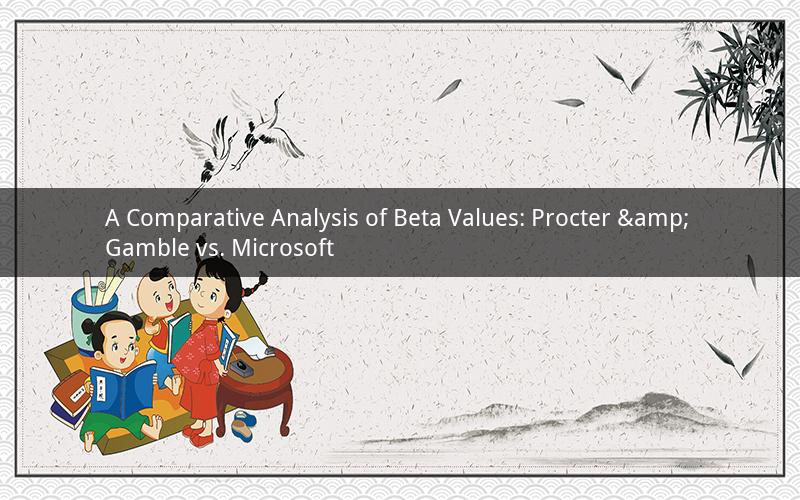
Beta is a measure of a stock's volatility in relation to the market. It indicates how much the price of a stock is expected to move in relation to the market. A higher beta suggests a more volatile stock, while a lower beta indicates a less volatile stock. In this article, we will compare the beta values of two prominent companies: Procter & Gamble (P&G) and Microsoft, to determine which one has a higher beta.
Procter & Gamble is an American multinational consumer goods corporation that produces a wide range of products, including household cleaning agents, personal care products, and beauty care products. The company is one of the world's largest consumers goods companies, with operations in more than 70 countries. Microsoft, on the other hand, is an American multinational technology company that develops, manufactures, licenses, and supports a wide range of software products and services.
Beta Value of Procter & Gamble
Procter & Gamble's beta value is approximately 0.64. This means that for every 1% change in the market, P&G's stock price is expected to change by 0.64%. A beta value of 0.64 indicates that P&G is less volatile than the market. The lower beta value suggests that P&G is a stable investment with a lower risk of significant price fluctuations.
Beta Value of Microsoft
Microsoft's beta value is approximately 1.11. This indicates that for every 1% change in the market, Microsoft's stock price is expected to change by 1.11%. A beta value of 1.11 suggests that Microsoft is more volatile than the market. The higher beta value indicates that Microsoft is a riskier investment with a higher likelihood of significant price fluctuations.
Comparison
When comparing the beta values of Procter & Gamble and Microsoft, it is clear that Microsoft has a higher beta value (1.11) compared to Procter & Gamble (0.64). This means that Microsoft is more sensitive to market movements, and its stock price is expected to be more volatile.
Investment Implications
For investors looking for a stable investment with lower risk, Procter & Gamble might be a better choice due to its lower beta value. P&G's stock is expected to be less volatile, making it a safer investment option for conservative investors.
On the other hand, for investors who are comfortable with higher risk and are looking for potentially higher returns, Microsoft might be a better option. Microsoft's higher beta value suggests that its stock price could experience more significant gains and losses, which may appeal to risk-tolerant investors.
5 Questions and Answers
1. Question: What is a beta value, and how is it calculated?
Answer: Beta value is a measure of a stock's volatility in relation to the market. It is calculated by comparing the stock's price movements to those of the market index.
2. Question: Why is it important to consider beta values when investing?
Answer: Beta values provide insight into a stock's volatility and risk. By understanding a stock's beta value, investors can make more informed decisions about their investments.
3. Question: Can a stock have a beta value of zero?
Answer: No, a stock cannot have a beta value of zero. A beta value of zero would indicate that the stock's price moves independently of the market, which is not possible.
4. Question: Does a higher beta always mean a higher return?
Answer: Not necessarily. While a higher beta indicates a higher level of volatility and risk, it does not guarantee higher returns. Higher returns are not guaranteed, and investors should consider the trade-off between risk and potential reward.
5. Question: Can beta values change over time?
Answer: Yes, beta values can change over time. Factors such as changes in a company's business operations, market conditions, and economic conditions can influence a stock's beta value. It is important for investors to monitor these changes and adjust their investment strategies accordingly.